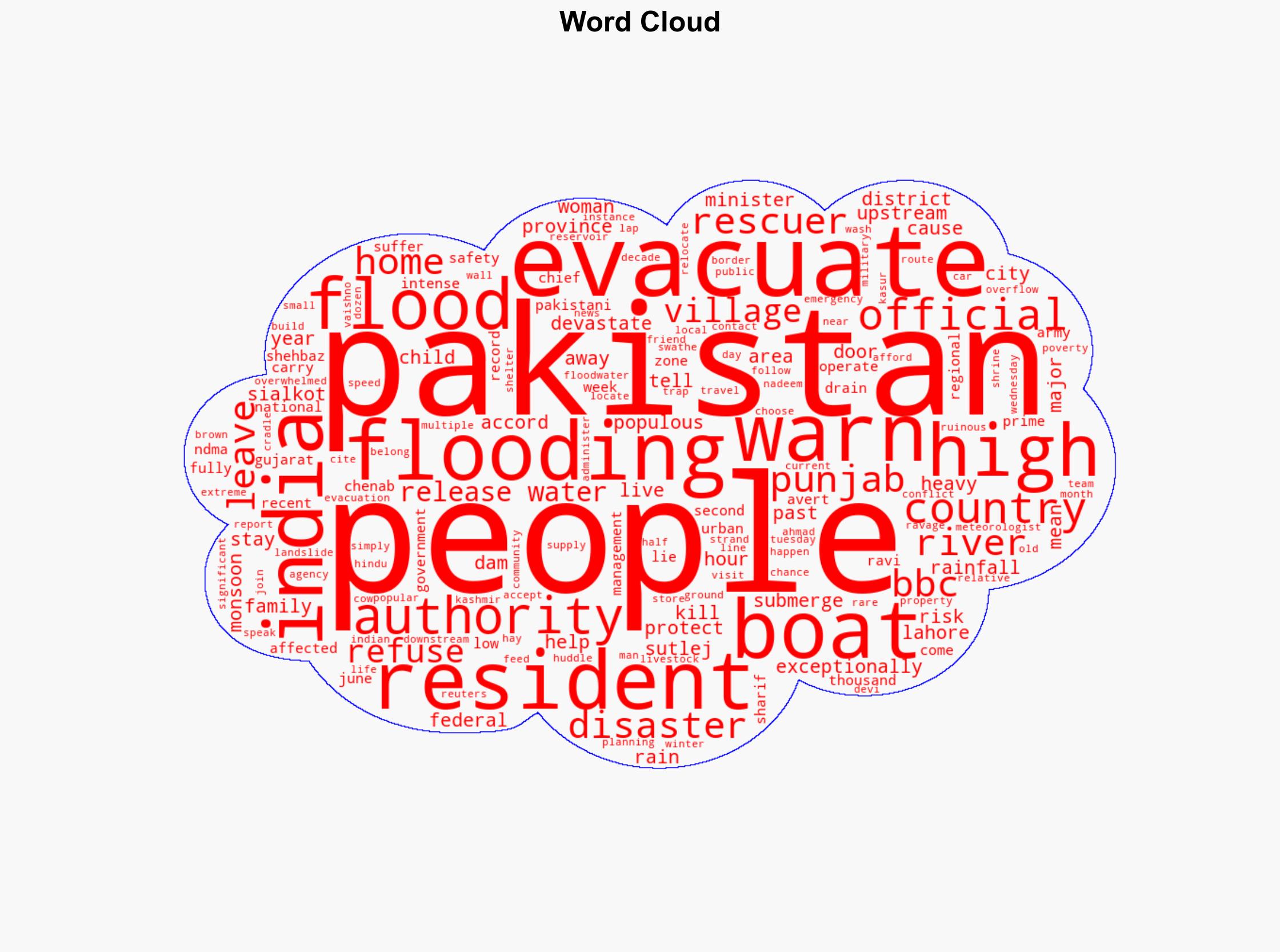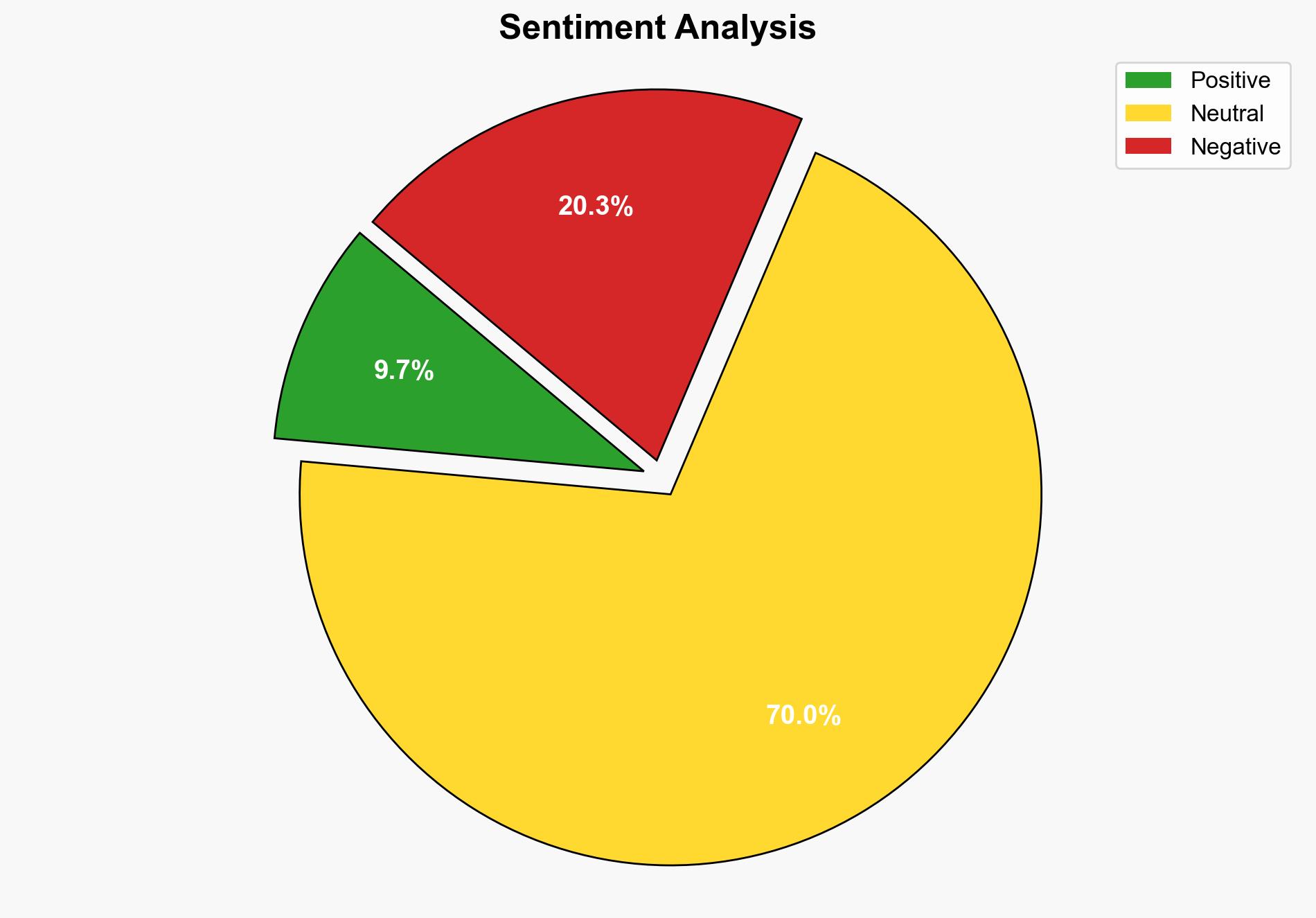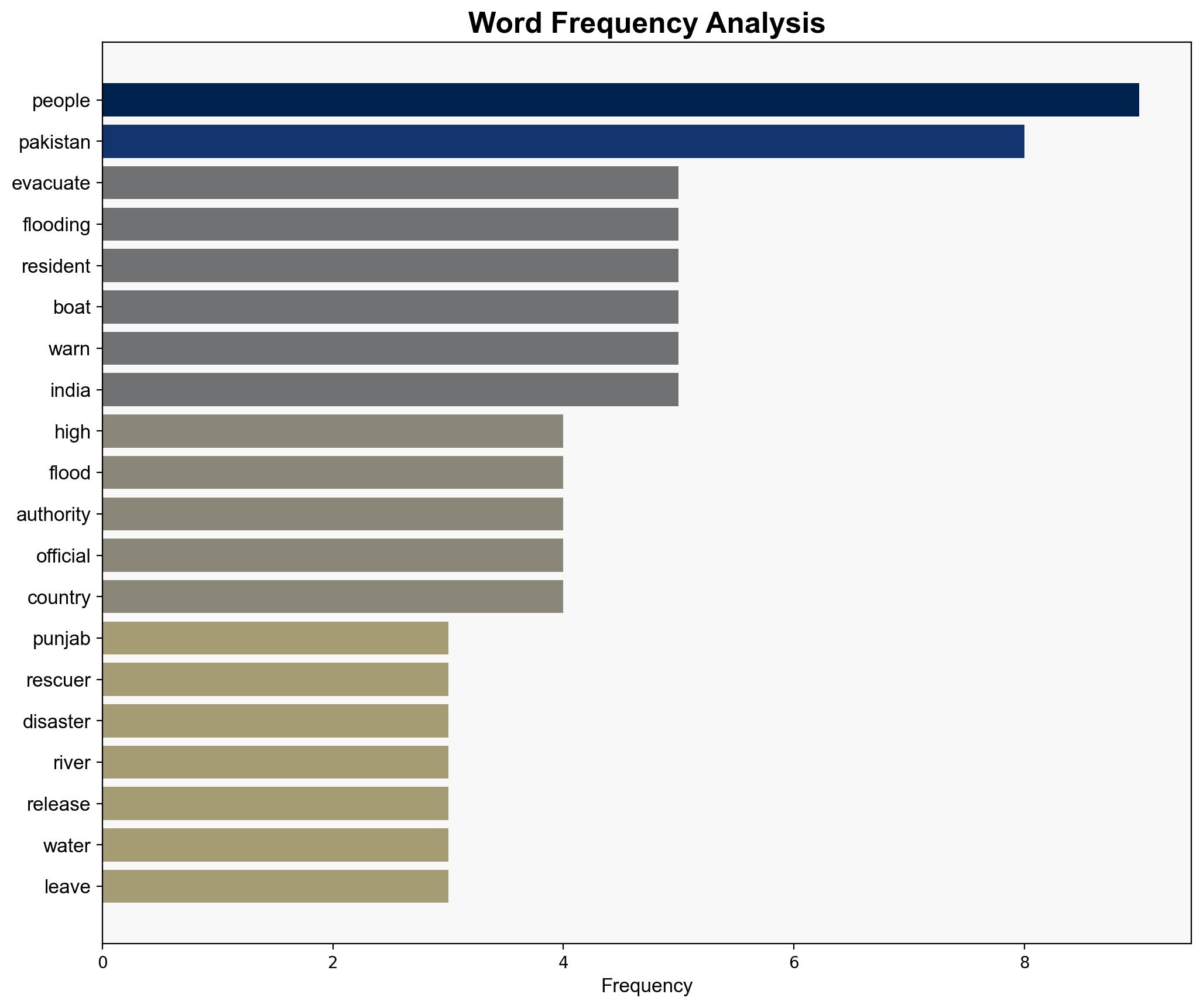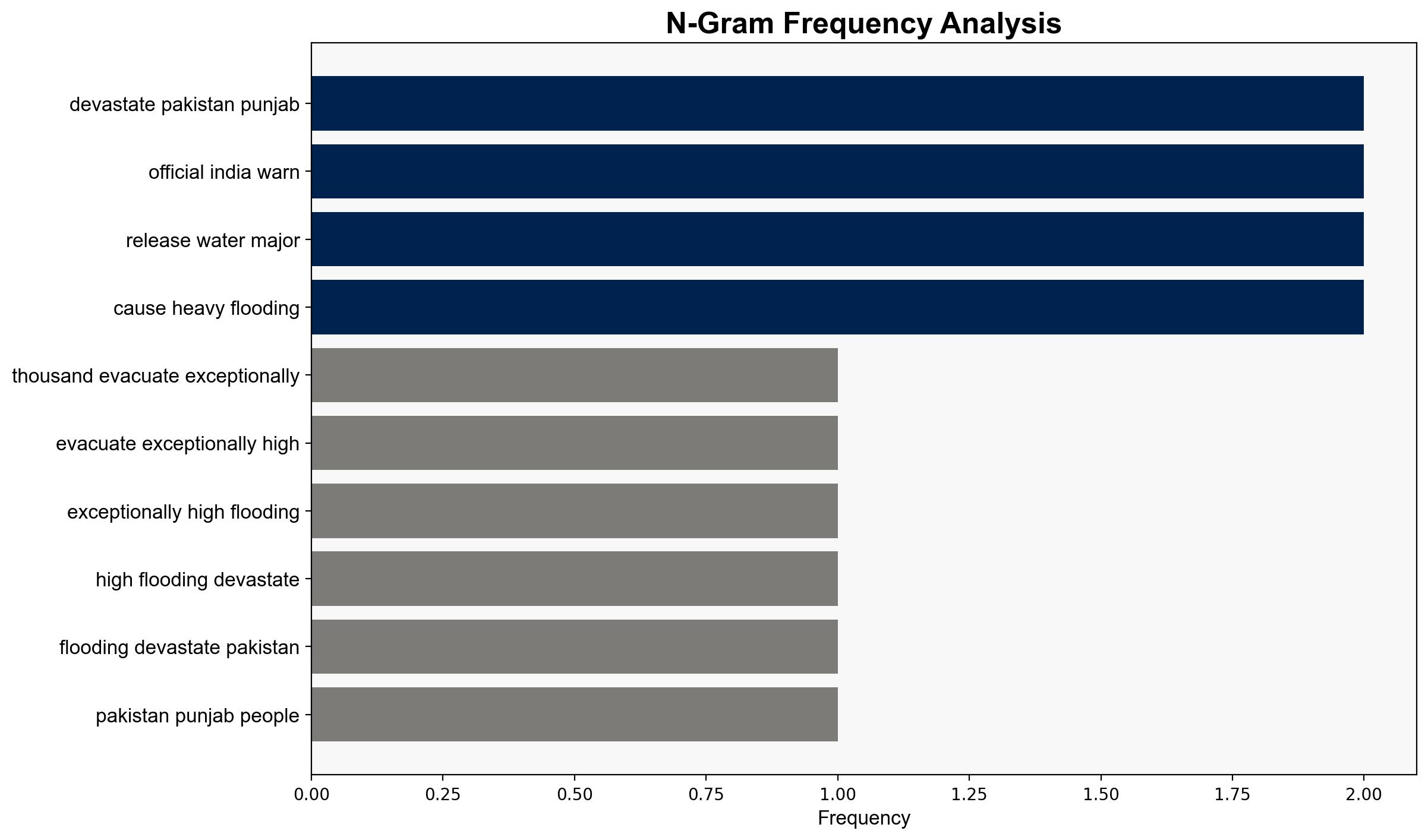Thousands evacuated as ‘exceptionally high’ flooding devastates parts of Pakistan’s Punjab – BBC News
Published on: 2025-08-27
Intelligence Report: Thousands evacuated as ‘exceptionally high’ flooding devastates parts of Pakistan’s Punjab – BBC News
1. BLUF (Bottom Line Up Front)
The most supported hypothesis is that the flooding in Punjab, Pakistan, is primarily a result of natural climatic patterns exacerbated by upstream water release from India. Confidence level: Moderate. Recommended action includes enhancing cross-border water management cooperation and improving local disaster preparedness and response strategies.
2. Competing Hypotheses
1. **Hypothesis A**: The flooding is primarily due to natural climatic events, specifically intense monsoon rains, compounded by the release of water from Indian dams.
2. **Hypothesis B**: The flooding is a result of inadequate infrastructure and poor disaster management in Pakistan, with the release of water from Indian dams being a secondary factor.
Using the Analysis of Competing Hypotheses (ACH) 2.0, Hypothesis A is better supported due to the historical pattern of monsoon rains causing significant flooding in the region and the documented release of water from Indian dams. Hypothesis B is less supported as it does not fully account for the external factors contributing to the flooding.
3. Key Assumptions and Red Flags
– **Assumptions**: It is assumed that the release of water from Indian dams is a direct response to reservoir capacity limits rather than a strategic decision. It is also assumed that local infrastructure is inadequate to handle such extreme weather events.
– **Red Flags**: Lack of detailed data on the coordination between Indian and Pakistani authorities regarding water management. Potential bias in attributing blame solely to natural causes without considering human factors.
4. Implications and Strategic Risks
The flooding poses significant humanitarian risks, including displacement, loss of life, and economic disruption. There is a potential for increased tensions between India and Pakistan if water management is perceived as a geopolitical tool. The situation could exacerbate existing socio-economic vulnerabilities and lead to long-term regional instability.
5. Recommendations and Outlook
- Enhance bilateral dialogue between India and Pakistan on water management to prevent future crises.
- Invest in infrastructure improvements and disaster preparedness in flood-prone areas.
- Scenario Projections:
- Best Case: Improved cooperation leads to effective flood management and reduced impact.
- Worst Case: Continued flooding exacerbates regional tensions and humanitarian crises.
- Most Likely: Periodic flooding continues with moderate improvements in disaster response.
6. Key Individuals and Entities
– Shehbaz Sharif
– Nadeem Ahmad
– Pakistan’s National Disaster Management Authority (NDMA)
7. Thematic Tags
national security threats, regional focus, disaster management, climate change, India-Pakistan relations





